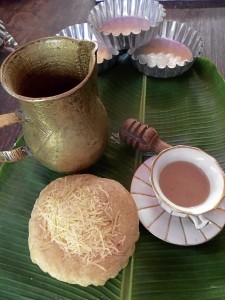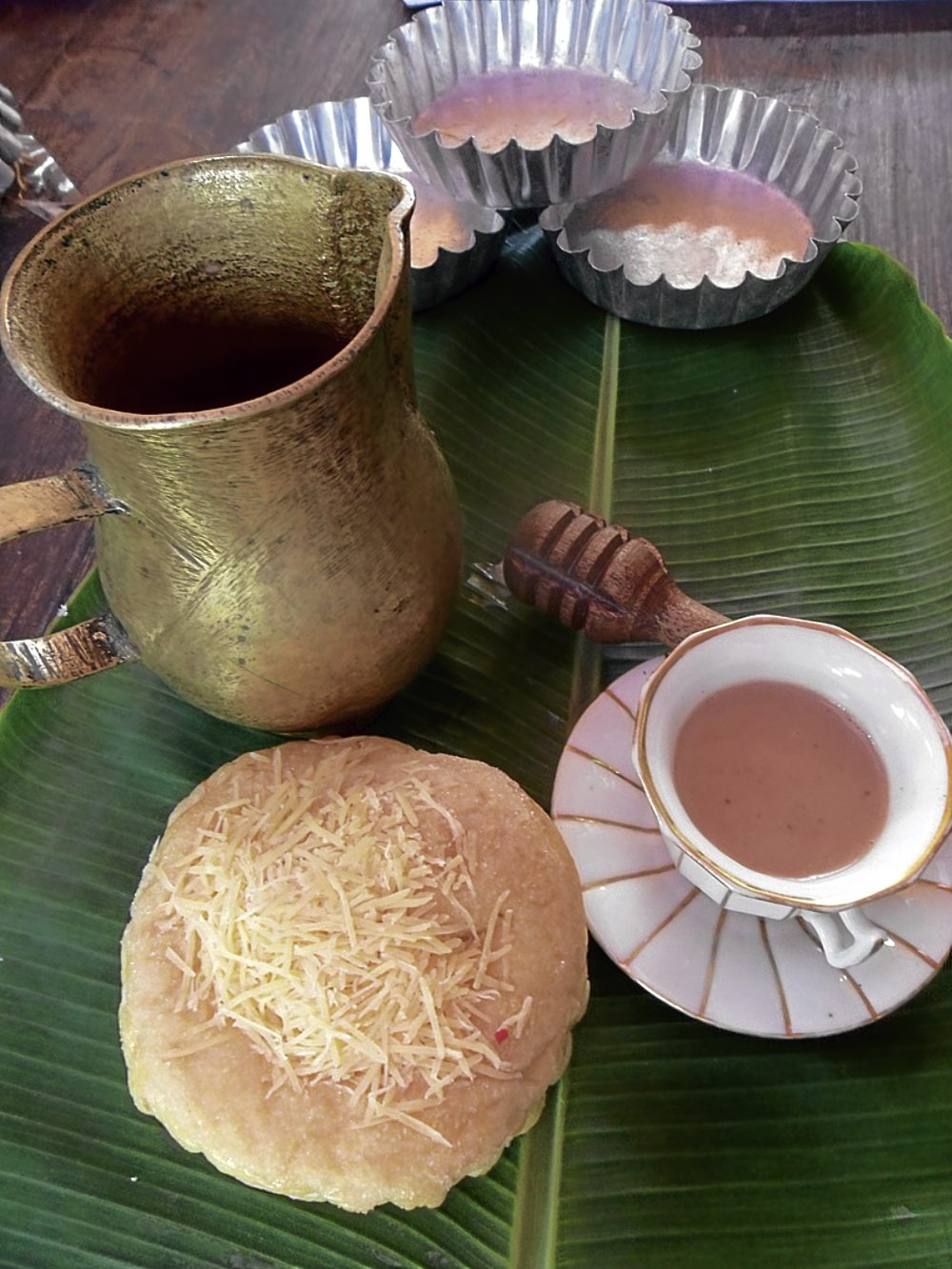
Christmas is personal to a family. It doesn’t have to include the food the region is noted for. It can do away with the perceived must-haves like jamon and queso de bola. It all depends on what the family expects. And that is usually the specialty of lola or an aunt or a retired driver’s haleyang ube with Star margarine on top.
For my family—that includes siblings, our children and grandchildren—each branch in the Fenix-Malixi tree brings what we’ve had every year. There will be the ordered lechon which certainly makes the converted billiard table into a buffet much more festive. There will be turkey, brined then roasted, the buttered bread stuffing placed in between the turkey’s skin and meat which accounts for the moistness even without basting. Pancit Malabon will be placed in a big bilao, ingredients bought only in the Malabon market a week before and served with calamansi and first-pressed patis (fish sauce). Barbecued pork and chicken is proof that a brother-in-law’s recipe still works including the all-important mashed potato. Of course, there has to be fish, roasted tilapia and rellenong bangus, for the seniors among us who think they have sworn off meat until tempted by the crackling sound of lechon skin being crunched by the younger generation. Christmas Eve is designated “cheat day” in that case.
The salads change yearly depending on what is available, or whether a sister decided she wanted to do this new salad she learned. It could be Russian this year, or just greens, taco salad for the young ones, sayote tops with salted egg dressing. Or it could just be cucumber slices in a Filipino vinaigrette.
But it is fruit salad that is expected to be on the table, in several big bowls with cherries like rubies decorating a blanket of cream.
Underneath, cold pieces of canned fruit salad drained of syrup. Fresh fruits just won’t do because it won’t be the same, it won’t be like Lola or Mama used to do it.
* * *
Those who make the best ensaymada must be busy this season and it was lucky that I was able to watch how these are done before the big rush of orders happened.
At Lillian Borromeo’s Mexico, Pampanga home, we were just in time to watch her roll out the batter that had already been rising in the early hours. Batter is rolled into a circle, enriched by grated cheese and then rolled into a rod with a rounded stick which reminded us of our Third World bomb detector used by all security guards here. The rod of batter is shaped into a circle, the ends tucked inside. Bakers will tell you it’s in the style of a brioche. Then it’s time for the formed batter to rise again before it is baked.
We had to go back the next day to get the cooked ensaymada that was rolled the day before. The best part was sampling what we had witnessed or tried to do ourselves. With rich tsokolate e (chocolate espresso), we couldn’t imagine a more perfect Christmas merienda.
Because there are so many versions of ensaymada in Pampanga, we also visited Carreon’s Sweets and Pastries in Magalang. We were in time to watch the last stages where grated cheese was being strewn on top of a more brownish version.
But it was back in Metro Manila where we saw the Arayat version in the home of Susan Calo Medina where the Medina ensaymada was being prepared for the weekend Salcedo market in Makati. The recipe, according to Susan, was from her mother-in-law, Gertrudis Alejandrino Medina, who taught Guida, the yaya of her husband. Susan’s son, Marc, decided to learn how, including beating the batter (binabatbat) on the worktable, sending pieces of batter flying all over the place. But he persevered and then adjusted the recipe to make it the way he likes it in taste and texture.
In “Memories of Philippine Kitchens” by Amy Besa and Romy Dorotan, a sidebar within the chapter of Christmas notes that the origin of ensaimada is in Mallorca in the Balearic Islands of Spain. The information is from “Oxford Companion to Food,” edited by Alan Davidson, which cites how the saim in ensaimada comes from the Mallorquinese word for pork lard. Lard is still used in many of our traditional biscuits and even cake-like breads.
The revised and updated version of the Besa-Dorotan book was launched at Enderun Colleges, Fort Bonifacio, Taguig City. The revision is mostly at the end where the couple’s recipes in their second restaurant, Purple Yam in Brooklyn, have been added as well as the dinuguan recipe of Margaux Salcedo’s Nana Meng of Sta. Maria, Bulacan, and the chicken kinulob of Tricia Tensuan’s Lola Anday of Polo, Bulacan.
Those were cooked on site and the guests sampled more than those traditional food. There was Romy Dorotan’s fruit granita spiked with lambanog. And Glenda Barretto’s wonderful kakanin (rice cakes), especially the sinacugan of her home province, Samar, that combines short-grain rice, short-grain sticky rice and black rice with coconut milk and a little sugar. I would trade that anytime for puto bumbong.
E-mail [email protected].









































